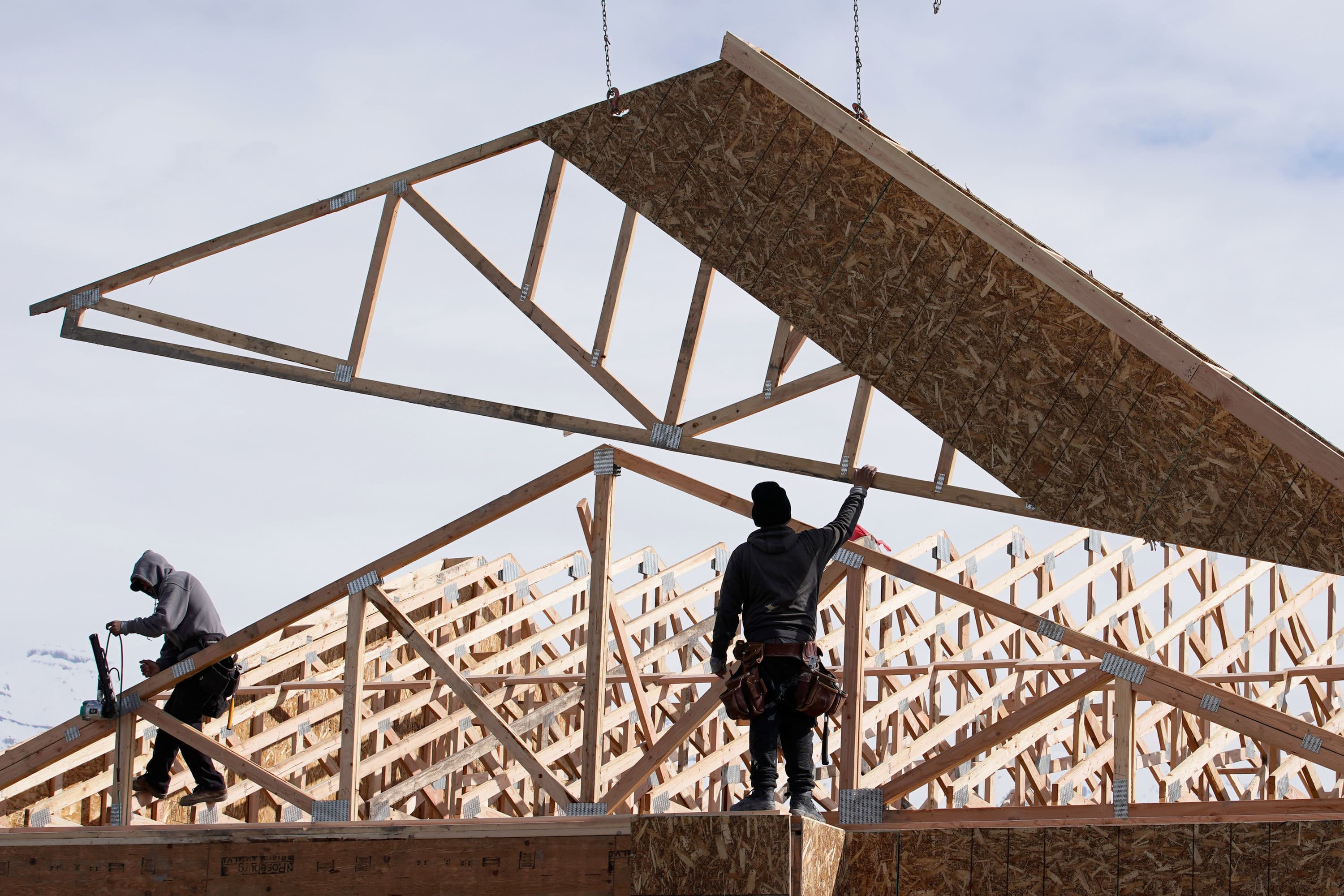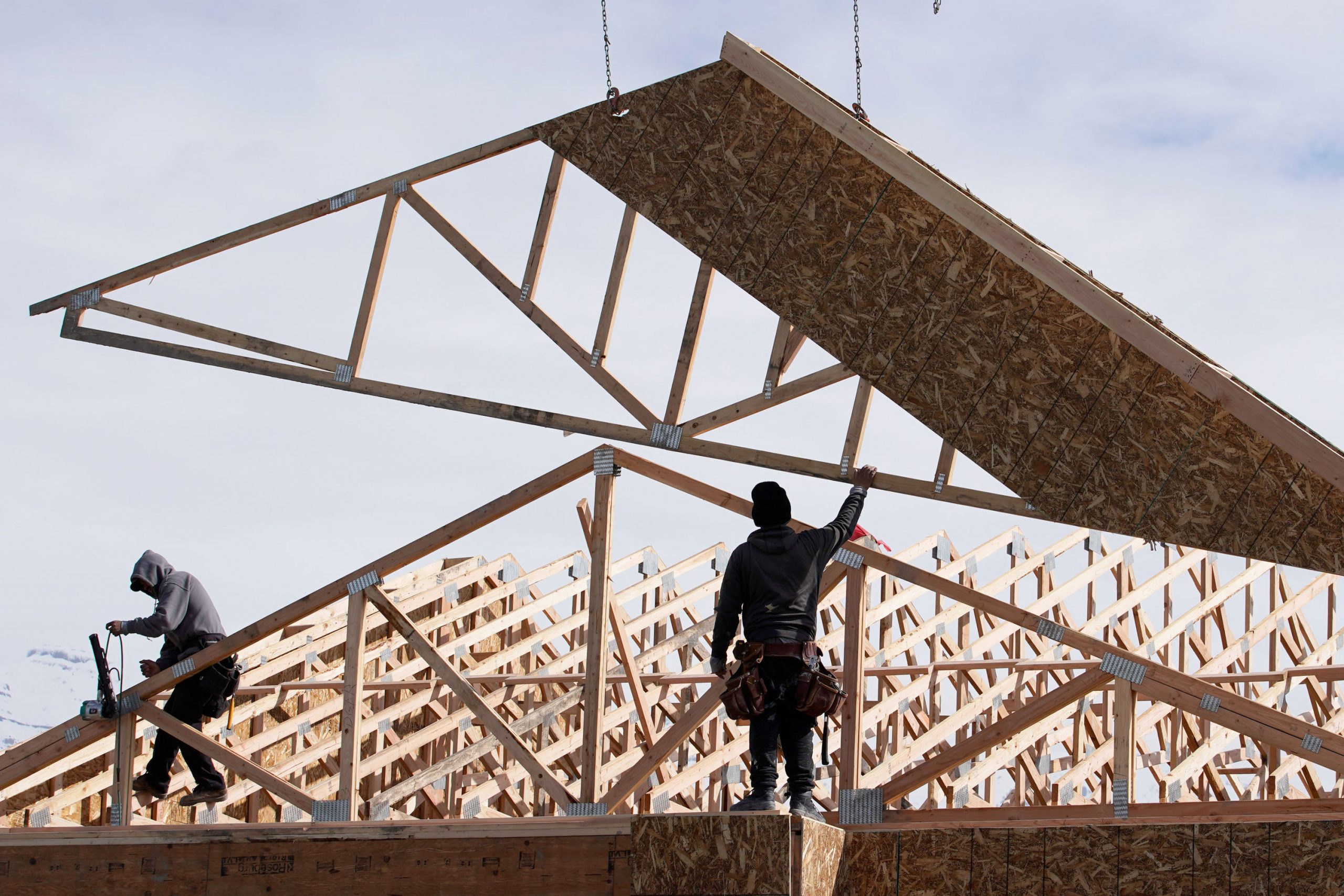
Workers install roof trusses on a home under construction in Vineyard, Utah.
George Frey | Bloomberg | Getty Images
Sales of new U.S. single-family homes raced to a 12.5-year high in January, pointing to housing market strength that could help to blunt any hit on the economy from the coronavirus and keep the longest economic expansion in history on track.
The Commerce Department said on Wednesday new home sales jumped 7.9% to a seasonally adjusted annual rate of 764,000 units last month, the highest level since July 2007.
December’s sales pace was revised up to 708,000 units from the previously reported 694,000 units. Economists polled by Reuters had forecast new home sales, which account for about 12.3% of housing market sales, would advance 3.5% to a pace of 710,000 units in January.
New home sales are drawn from permits and tend to be volatile on a month-to-month basis. Sales surged 18.6% from a year ago. New home sales jumped 30.3% in the Midwest to their highest level since October 2007. They soared 23.5% in the West to their highest level since July 2006 and rose 4.8% in the Northeast. But sales fell 4.4% in the South, which accounts for the bulk of transactions.
Financial markets have been rattled in recent days by fears that the coronavirus, which has killed more than 2,000 people, mostly in China, and spread to other countries, would undercut global and U.S. economic growth. The epidemic is seen disrupting supply chains for manufacturers, and hurting the travel and tourism industries.
Data firm IHS Markit said last Friday its flash Composite PMI Output Index, which tracks the U.S. manufacturing and services sectors, contracted to a 76-month low in February.
Though housing accounts for a small share of gross domestic product, it has a giant foot print on the economy. Home Depot, considered a barometer for the economic health of U.S. households, on Tuesday reported fourth-quarter sales and profit that beat analysts’ estimates.
Housing market strength could help keep the economic expansion, now in its 11th year, on track. The sector, which accounts for about 3.1% of GDP, is being supported by cheaper mortgage rates after the Federal Reserve cut interest rates three times last year.
Reports this month showed permits for the future construction of single-family homes jumped in January to the highest since June 2007. The stock of homes under construction in January was the highest since February 2007.
That could help to ease a shortage of homes that has constrained sales. The median new house price surged 14.0% to a record $348,200 in January from a year ago. Sales last month were concentrated in the $200,000-$749,000 price range. New homes priced below $200,000, the most sought after, accounted for less than 10% of sales.
There were 324,000 new homes on the market in January, up 0.3% from December. At January’s sales pace it would take 5.1 months to clear the supply of houses on the market, down from 5.5 months in December.


 Signal2forex.com - Best Forex robots and signals
Signal2forex.com - Best Forex robots and signals




